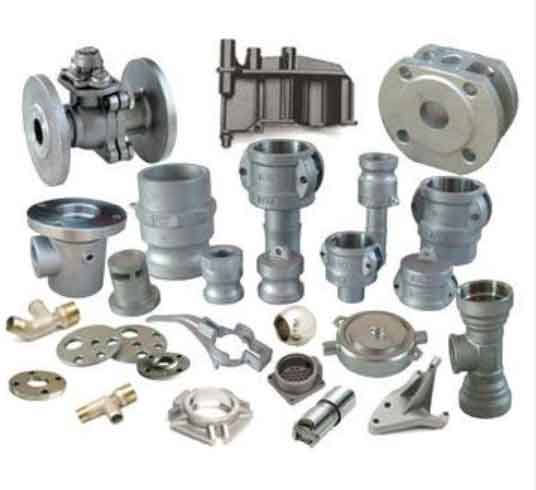When designing parts for sand casting, it’s important to consider various factors to optimize manufacturability and ensure successful casting. Here are some design considerations for sand casting parts:

- Draft angles: Including appropriate draft angles in the design allows for easier removal of the pattern from the sand mold and facilitates smooth casting ejection. Typically, a draft angle of 1-3 degrees is recommended.
- Uniform wall thickness: Maintaining uniform wall thickness throughout the part helps promote even solidification and reduces the risk of defects, such as shrinkage or porosity. Avoid abrupt changes in wall thickness to minimize stress concentration.
- Fillets and radii: Incorporating fillets and radii at the corners and transitions helps improve mold filling, reduces stress concentration, and prevents the formation of sharp edges that could lead to casting defects.
- Undercuts and internal features: Minimizing undercuts and complex internal features simplifies the mold-making process and eases the extraction of the casting. If undercuts or internal features are necessary, additional steps such as the use of removable cores or slides may be required.
- Gating and risering: Properly designed gating and risering systems are crucial for ensuring smooth metal flow and minimizing defects. Consider the location, size, and shape of gates and risers to promote proper filling, reduce turbulence, and facilitate efficient feeding of the casting.
- Parting line placement: Carefully consider the placement of the parting line, which is the line where the mold separates into two halves. Optimize the parting line to minimize the need for additional mold features and post-casting operations, such as machining or finishing.
- Mold features and cores: Design the mold features, such as cores and inserts, to achieve the desired geometry and features in the casting. Consider the feasibility of creating the required mold features and ensure proper support and alignment during the casting process.
- Material selection: Selecting the appropriate casting material is crucial for achieving the desired mechanical properties and performance of the part. Consider factors such as material compatibility with the sand casting process, required strength, corrosion resistance, and cost-effectiveness.
- Tolerances and allowances: Specify appropriate tolerances and allowances in the design to account for dimensional variations and the shrinkage of the casting during solidification and cooling. Consult with the sand casting manufacturer to determine suitable tolerances for the specific casting process.
- Avoiding sharp corners: Avoid sharp corners and thin sections that can lead to stress concentration and potential defects. Use fillets or radii to distribute stress and promote better overall strength.
By considering these design considerations, you can optimize the manufacturability of sand casting parts, improve casting quality, and minimize the risk of defects. Collaborating with experienced sand casting manufacturers can provide valuable insights and guidance during the design process.
